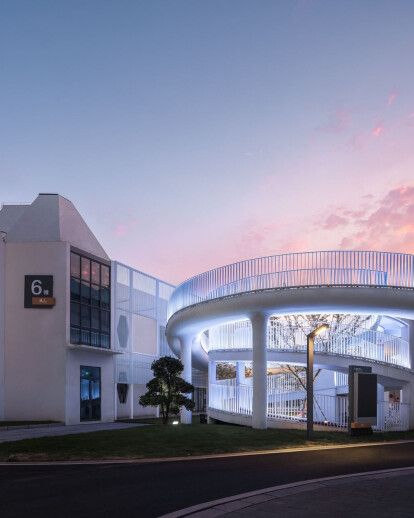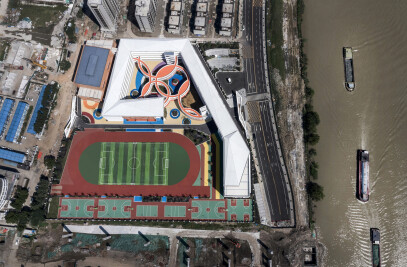Changshu is a vital textile industry gathering centre in China. In the city development process, textile workshop, represented by textile manufacturing sites, becomes the essential architectural type in the city. Changshu embroidered garment factory founded in 1979. It entirely moved to Haiyu South Road No.77 and started a glorious time in the city centre.

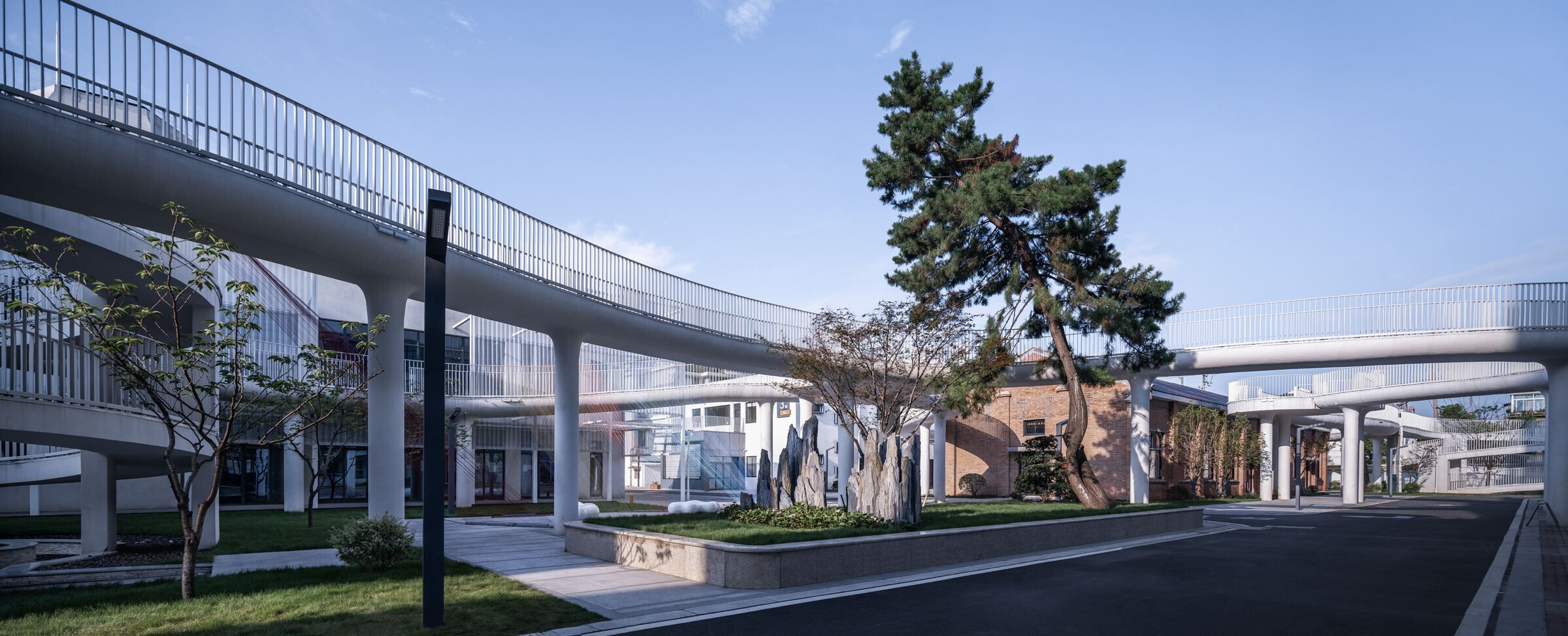
With the rapid development of Chinese society, giving way to consumption, earth-shaking changes have taken place in industries and cities over the past few decades, which have led to the complete transformation of urban-architecture functions. Benefiting from the particular location advantages, the operation mode of the Jiangnan embroidery garment factory has gradually changed from production management to building rental, and the buildings have been used continuously and frequently. However, with the excessive use, the buildings are damaged and the infrastructure is old, which makes the buildings gradually become a negative space in the downtown. In 2019, Changshu Jiangnan Group started the transformation and renovation on the factory's existing basis to awaken its vitality and value.

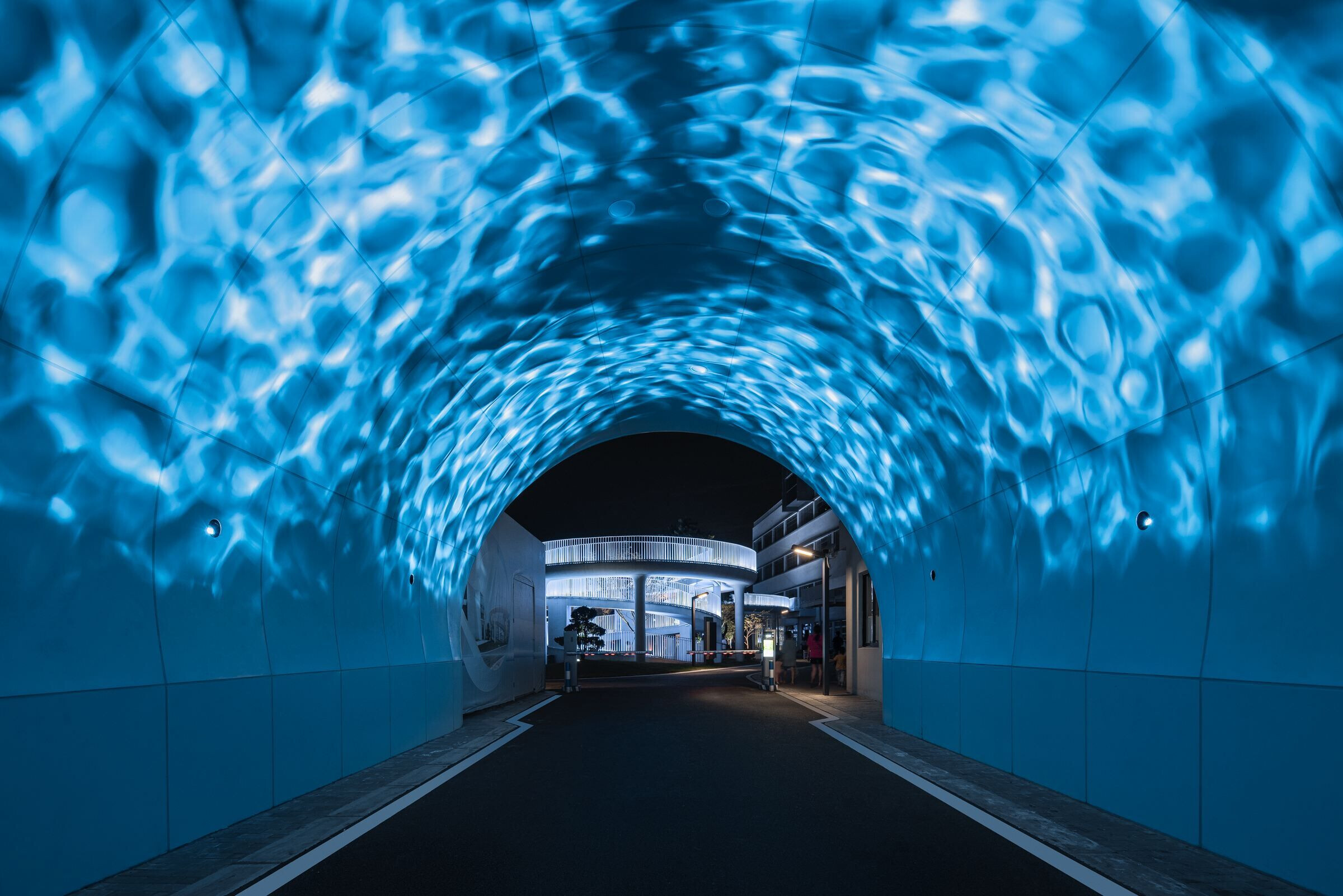
The project comprises four multistory buildings, covering an area of 10000 square meters and a total construction area of 9726 square meters. After careful on-site investigation and analysis, the design team upholds the attitude of fully respecting the history and current situation, and only demolished and rebuilt one brick structure raw auxiliary building that is seriously damaged and has become a dangerous building.

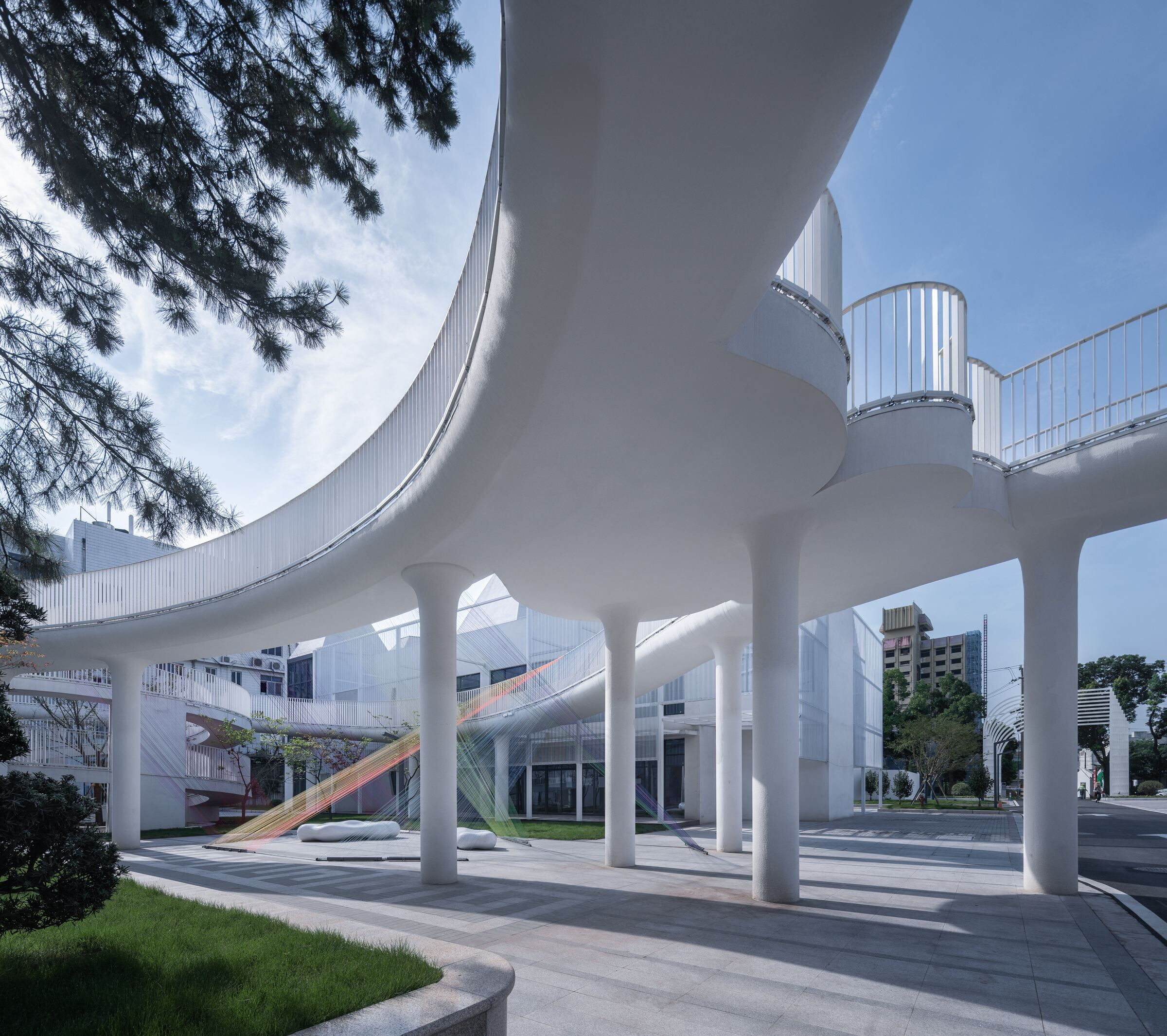
The rest of the production workshop, office building and restaurants have been partially reinforced to retain their original structure. However, implanting new using functions to the old building to create new dynamic use scenarios and images has become the focus of this transformation and improvement. Especially for such a building group in the core area of the city, it is necessary not only to maintain the city's memory but also to adapt to the new development needs of the times. Therefore, innovative elements must be added in the process of renovation to realize a sustainable organic change. This change does not rely on new things to cover the old. Still, it juxtaposes this historical relationship in the dimension of time, which can not only meet the requirements of new urban functions but also leave a clear trace of recorded development.


By analyzing the relationship between the original buildings and their future functions, these buildings with huge differences and different personalities need to form an organic ecology. The feeling attribute between buildings and sites needs to be transformed from the original single experience into a composite perception with memory, which requires strong innovative elements to be involved in the sites. On the one hand, in the process of intervention, this new element maintains the memory of the place. On the other hand, it brings a brand-new impact on the original order to send an echo to deal with the current life, which can make the project show the thickness of time on a longer time axis.


"Cloud" itself is an abstract language, but it is the part that can best describe the artistic conception in Chinese traditional landscape painting. Clouds divide mountains and hide pavilions in the painting. It seems to cover things, but it can stimulate everyone's personal experience and imagination, and become the most interesting part of the painting, which can be called the earliest spiritual interaction. We take "cloud" as the modeling element and create a unique walking experience with the help of the elegance and freedom of the cloud, which also makes the original building truly interact with people. The new element language integrates the difference of architecture. It is no longer a standing island, but the most fascinating expression on the site.
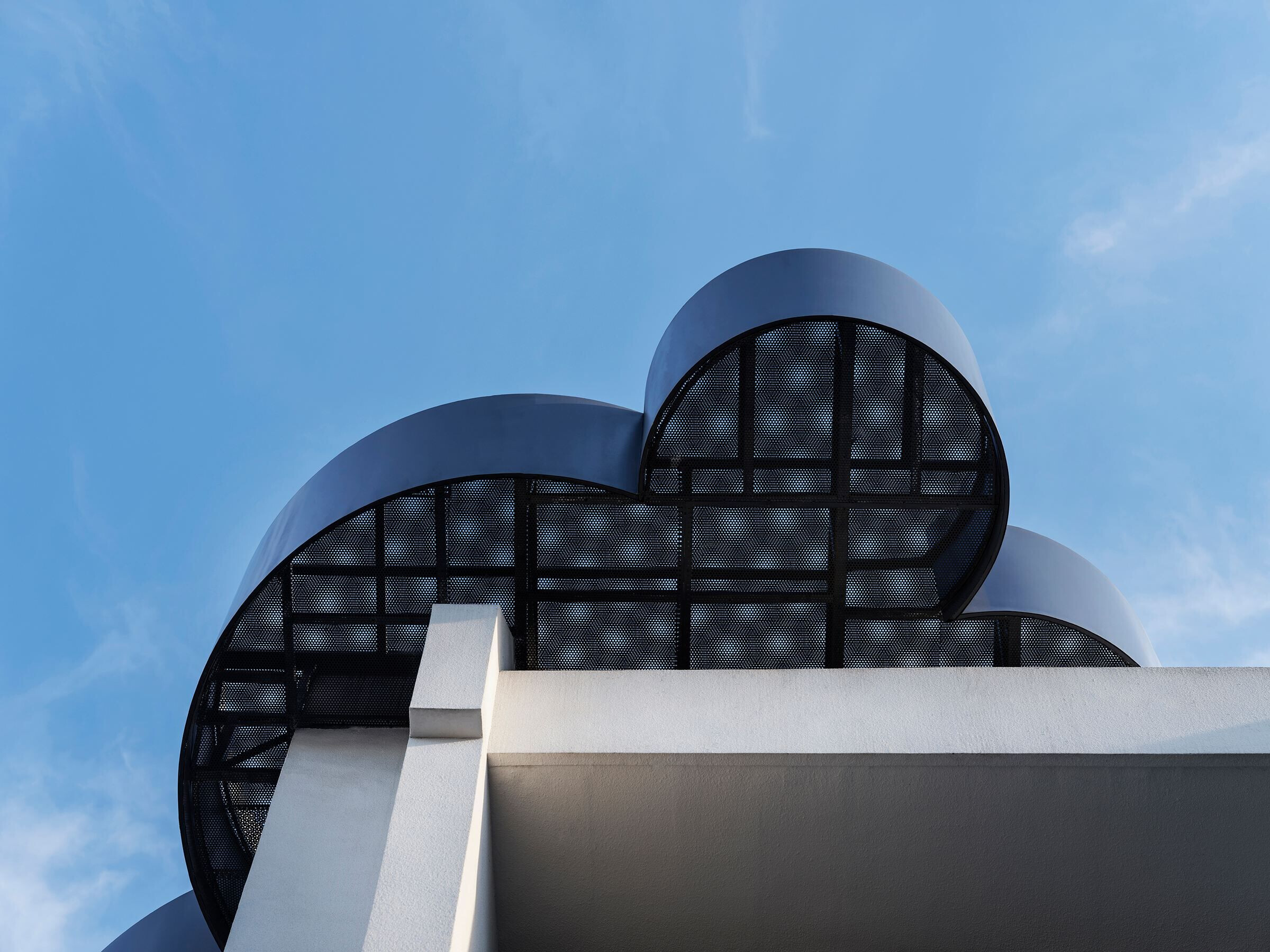
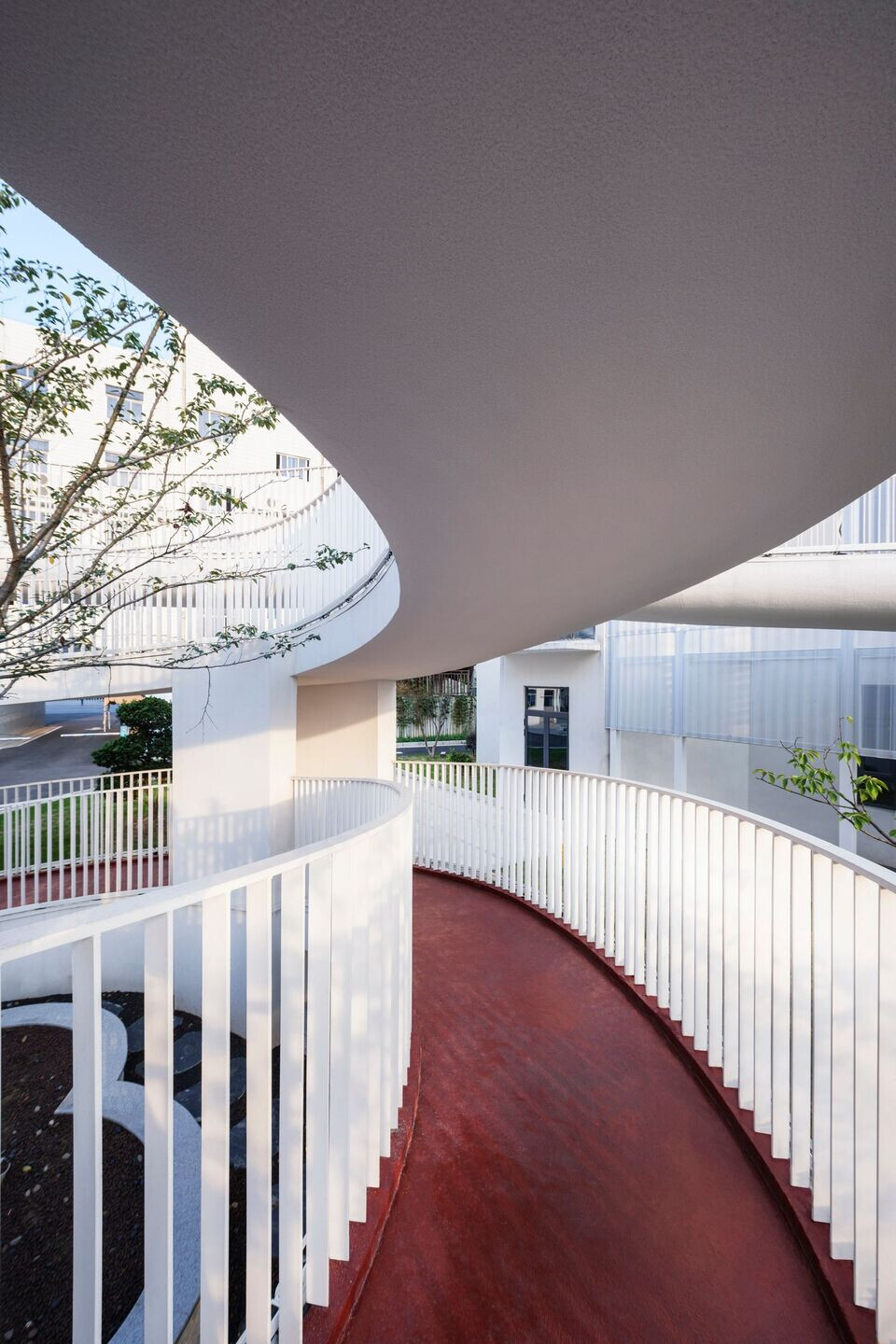
The "new" of architecture is a poetic re-combination relative to the "old". We put a floating clever cloud corridor between the original hard and solemn building volumes. The cloud corridor integrated with the architecture, filling the gap, and allowing people to embark on a romantic journey in time and space after breaking away from the shackles of the ground. The original straightforward and boring place has undergone positive changes after the intervention of the cloud corridor, and the spatial outline and dimension have been re-divided. The cloud corridor gave birth to a new shape on the site of the building with a gentle gesture, and we wandered around the buildings along the winding and undulation of the cloud corridor.
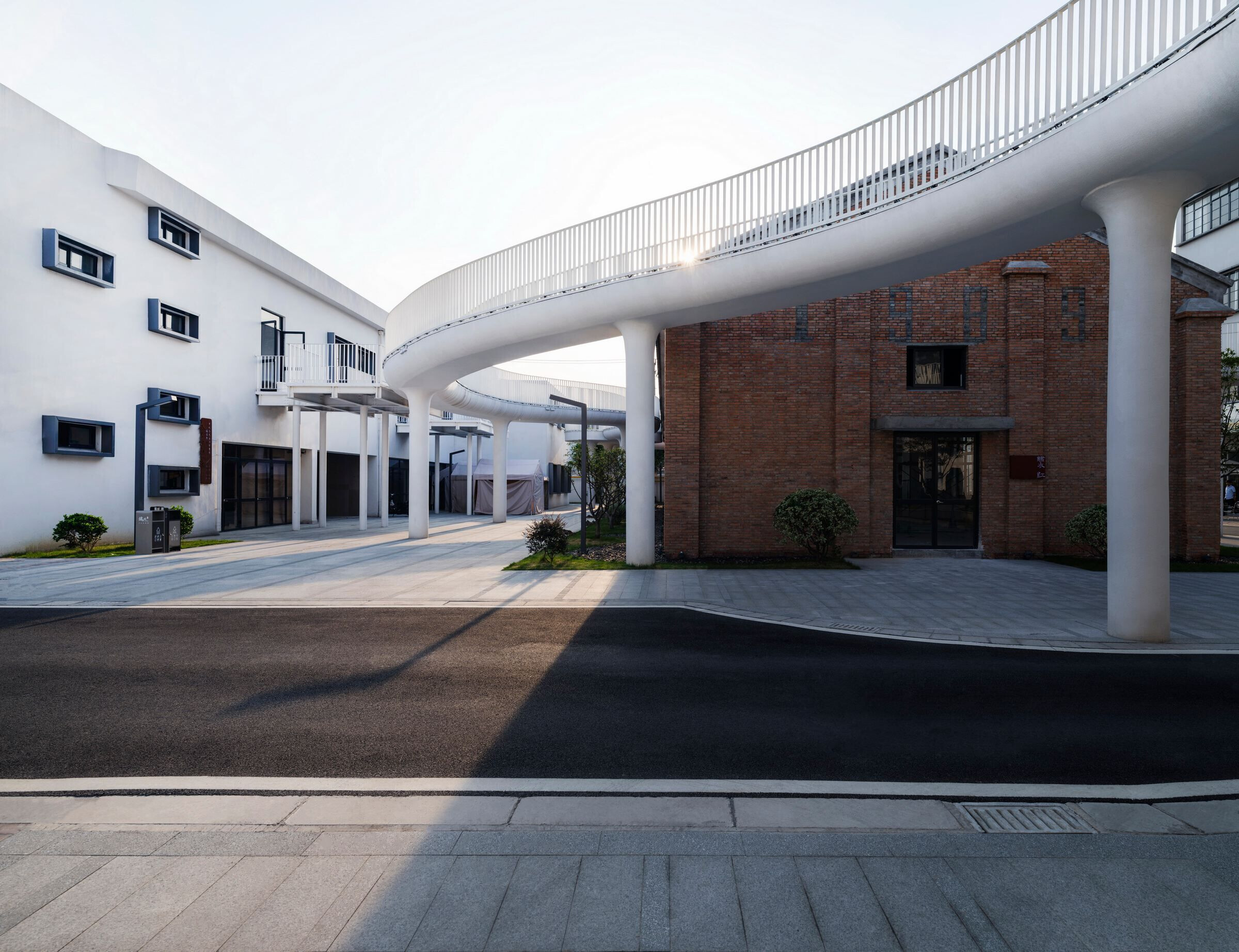
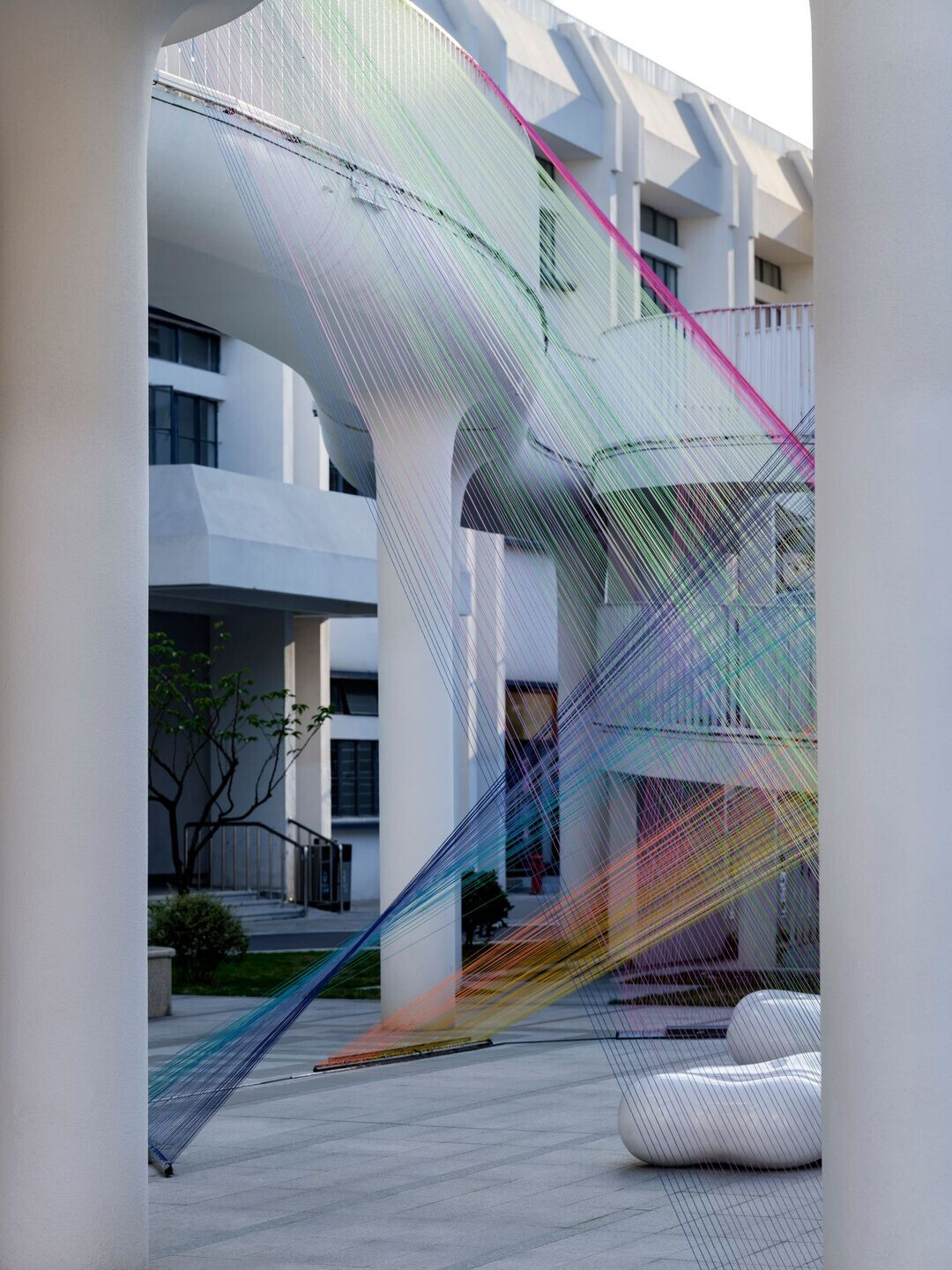
The reconstruction of existing buildings in China has gone through different stages, from covering new construction after demolition to complete retention and renewal. There should be other ways for different operation objects. Innovation based transformation is one of the most effective ways to truly make buildings glow with sustainable vitality and adapt to the development of the times. Jiangnan embroidery garment factory is our entirely new practice of this innovative transformation strategy. The real value of architecture is its use-value. In the process of use, the rich and individual life imprints brought by different users can enable the building to serve people for a long time, coexist with the times and society, and become the recorder of the development of the times.




